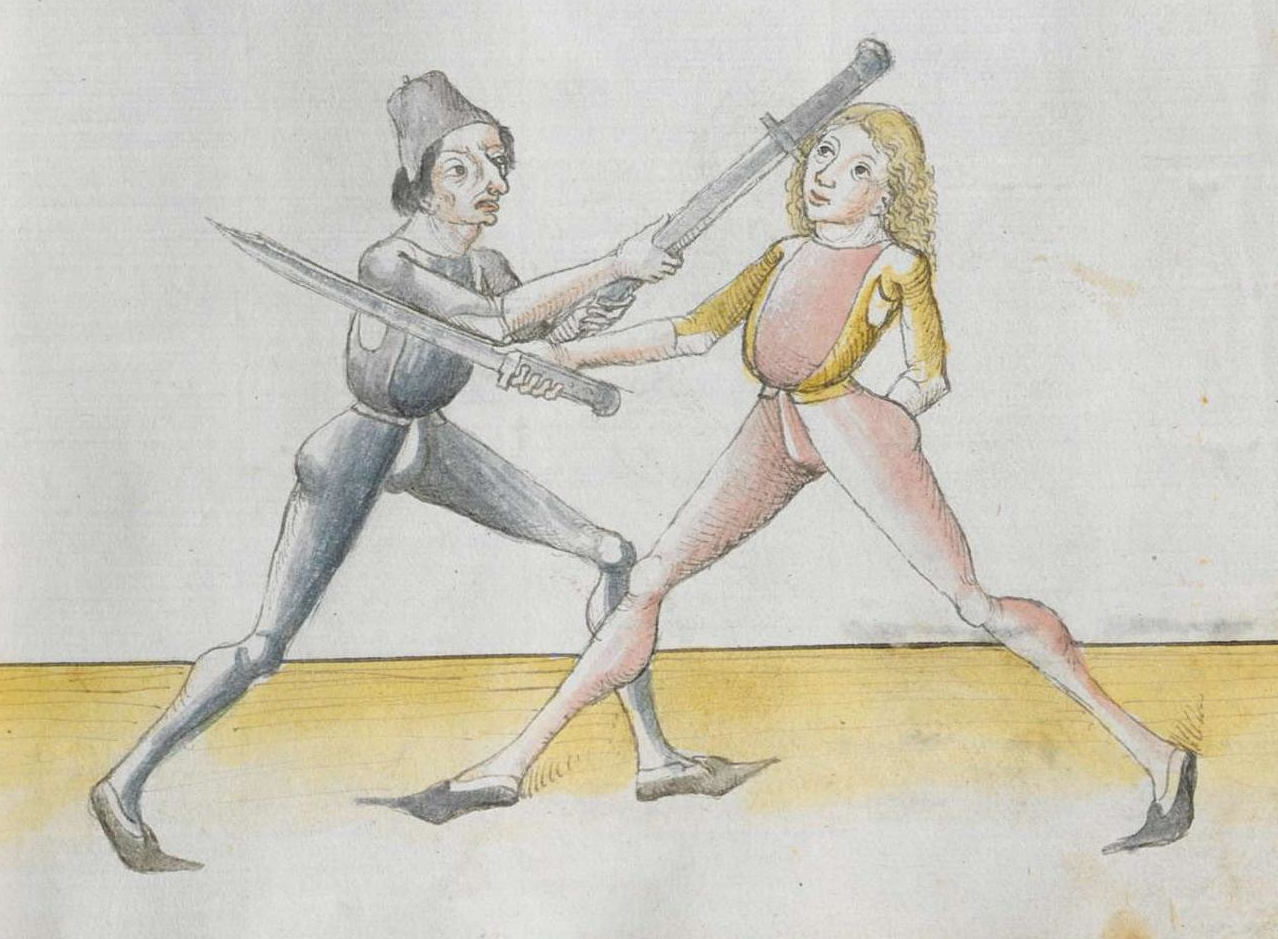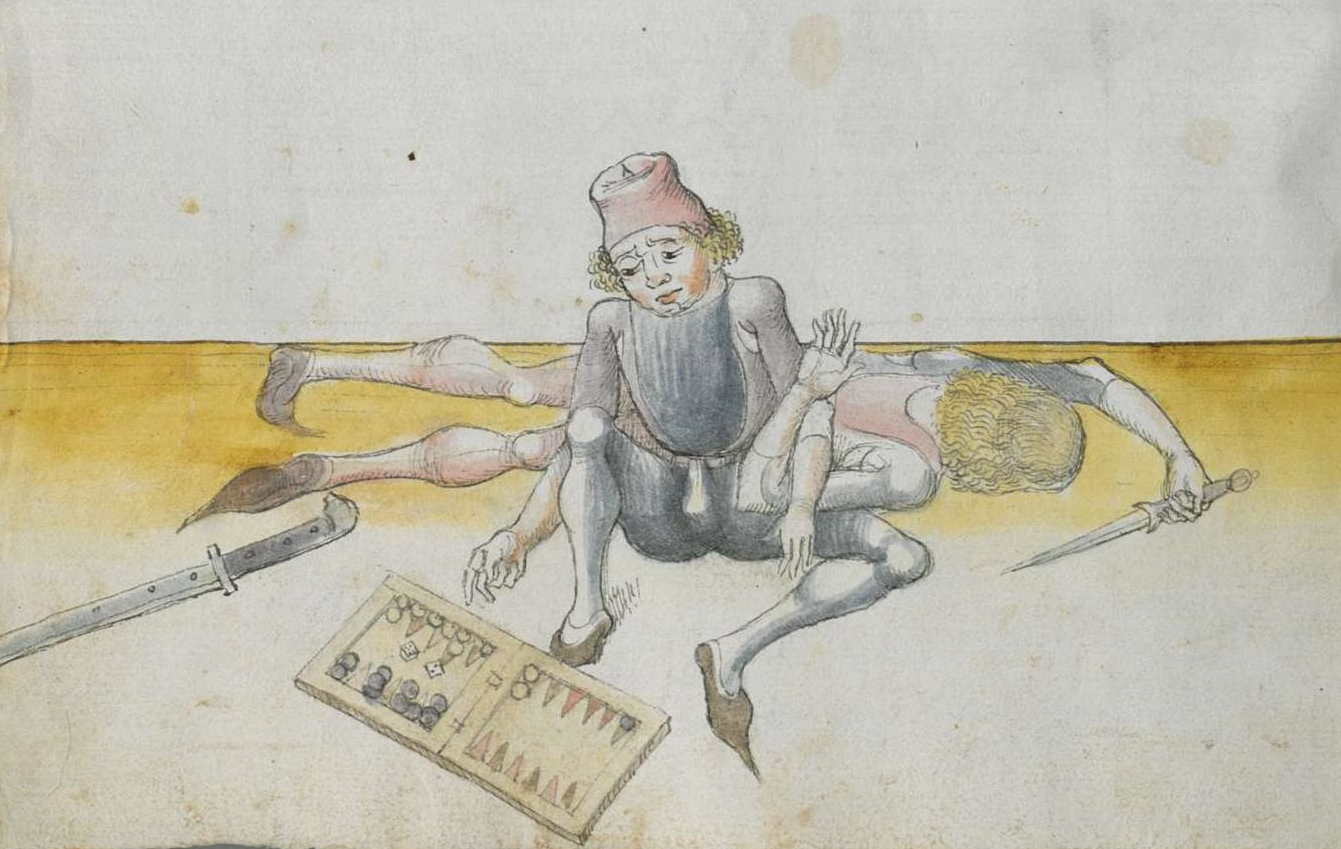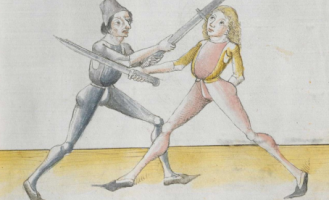Johannes Lecküchner – 15th century German priest and fencing master born in the area of Nuremberg in the 1430s. He died on 31 December 1482.

The first confirmed information about J. Lecküchner concerns his start of education at the Leipzig University in 1455, where two years later he acquired the title of baccalaureus1, 2. In 1459, he became a Catholic acolyte. In 1478, he began studying at the Heidelberg University. At that time he had already possessed his ordination3. Since 1480, he held the role of a parish priest in Herzogenaurach, Germany (today’s region of Bavaria). He replaced his predecessor, Father Johann Berger, who had renounced the parish4.
It is not known when and from whom J. Lecküchner learned fencing. During his life, he focused on messer combat (Messer— German for “knife”5), which at the time served mainly as a sidearm. A messer was cheaper than a sword as it did not need to be made by a bladesmith. Affordability of this weapon also resulted from the possibility of producing it from cheaper materials. Due to the above, this arm was popular among the less wealthy6.
J. Lecküchner wrote his first treatise Kunst des Messerfechtens (“The Art of Messer Fencing”) in 1478. It is assumed that it was the initial version of the treatise fully finished not until 19 January 1482.7. Both works are very similar and bear the same title, but it was the second one that was fully illustrated. Moreover, some of the techniques in the latter version were presented in a simplified way. Each treatise was dedicated to Philip the Upright, Elector Palatine of the Rhine. Interestingly, there is no evidence that there was any contact between the master and the Elector. This assumption is drawn based on the notes of Ludwig VI von Eyb, an electoral fencing teacher, who never mentioned J. Lecküchner in his notes8. The master did not manage to personally give his work to the Elector. It was not until 1579 when Superintendent Johann Tettelbach handed it to Phillip Ludwig, Count Palatine of Neuburg.9.
The fencing system represented in the treatises of master J. Lecküchner is organised in a way similar to that of Johanes Liechtenauer’s longsword teachings. Also, the same terminology was employed. Due to this, it is claimed that J. Lecküchner was inspired by the teachings of J. Liechtenauer10.
Despite its way worse organisation and incompleteness, the first version of Kunst des Messerfechtens was often attached in its shortened form to the later treatises. What deserves special attention in this context is the Codex Speyer (1491), which is credited for incorporating J. Lecküchner’s system to the German fencing tradition of J. Liechtenauer11. Another shortened versions of the treatise found their place in the works of Gregor Erhart (1533)12, Paulus Hector Mair (approx. 154013, approx. 154214, approx 155015) and Lienhart Sollinger (1556)16. Fragments of Kunst des Messerfechtens were also used in an anthology titled Der Altenn Fechteranfengliche Kunst, published by Christian Egenolff (1531)17. It is claimed that the author made a mistake in the master’s name as he ascribed the quoted fragment to “Hans Lebkommer”18.

Kunst des Messerfechtens is currently the best-studied and the most extensive source describing the system of messer combat, appreciated especially for a detailed approach to movement in combat. It contains numerous basic techniques as well as unfoldings and counterattacks, often embellished with a taunt comment from the author. J. Lecküchner often distinguishes which techniques serve to kill and which to disarm or stun. He also specifies which techniques serve for “playing fencing school”. Hardy encountered in other sources, such instructions are of enormous help for reenactors. However, the flaw of Kunst des Messerfechtens is a lack of logical order of its content. A researcher has to browse through the treatise and collate the techniques spread throughout the whole work. In this regard, Kunst des Messerfechtens is surpassed by the previous sources, which describe only the basics of messer fighting, i.e. “The Nuremberg Codex” (approx. 1389-1494)19 or treatises of Hans Talhoffer (1467)20and Paulus Kal (1470)21. It is assumed that similarly to the Zettel (Recital) by J. Liechtenauer, it was intentional so as to make it difficult for the uninitiated to learn the art.
Not much has been discovered about the history of J. Lecküchner. Fortunately, his works have survived and they are an invaluable source of fencing knowledge as well as bitter yet instructive quotes. It is worth ending with at least one of them: “Different techniques and unfoldings have been presented here—some of them are for the amusement of the rabble, others for real combat. Should you not like some, use the others. However, get to know each of them well and only then use the ones which you like most and perform best!”22.

